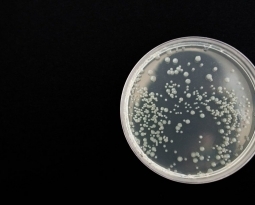Massachusetts Patent of the Month – August 2023
Interscope Inc. has developed an innovative system for removing material from a lumen or duct. This groundbreaking technology aims to enhance surgical procedures and improve patient outcomes. These surgical tools are used for exams as well as the removal of tissue and are often equipped with cameras to improve visibility.
The system comprises a guide wire and a cutting assembly. The guide wire extends from a proximal wire end to a distal wire end, providing a pathway for the cutting assembly. The cutting assembly consists of a flexible tube, a cutting tool, and a locking mechanism. The flexible tube is designed to be delivered through a flexible endoscope or via a percutaneous access port, enabling access to the target area. The cutting tool, coupled to the distal end of the tube, is responsible for removing the material within the lumen or duct.
One of the key features of this system is the locking mechanism, which couples with a coupling assembly of the guide wire. This mechanism receives torque from a motor attached to the proximal wire end, facilitating the rotation of the cutting tool. This rotation allows for precise and efficient removal of the material.
The cutting assembly can maneuver between different positions, ensuring optimal performance. In one position, the locking mechanism is adjacent to the proximal wire end, while in another position, it is adjacent to the distal wire end. This maneuverability enables the locking mechanism to couple with the coupling assembly at the distal wire end, providing the necessary torque for material removal.
To enhance functionality, the cutting assembly may include sensors to receive image data and detect the material within the lumen or duct. These sensors, incorporated into the guide wire, assist in guiding the system towards the material accurately.
The system incorporates channels for irrigation and aspiration. An irrigation channel delivers an irrigation substance to the lumen or duct, while an aspiration channel retrieves the removed material. Both channels are connected to a pump device coupled to the proximal tube end, ensuring efficient fluid management during the procedure.
Interscope’s inventive system revolutionizes the field of surgical tools by enabling effective material removal from lumens and ducts. With its cutting-edge design and advanced features, this technology promises to enhance surgical precision and patient care. As Interscope Inc. continues to innovate, we can expect further advancements in the field of medical devices that will shape the future of healthcare.
Are you developing new technology for an existing application? Did you know your development work could be eligible for the R&D Tax Credit and you can receive up to 14% back on your expenses? Even if your development isn’t successful your work may still qualify for R&D credits (i.e. you don’t need to have a patent to qualify). To find out more, please contact a Swanson Reed R&D Specialist today or check out our free online eligibility test.
Who We Are:
Swanson Reed is one of the U.S.’ largest Specialist R&D tax advisory firms. We manage all facets of the R&D tax credit program, from claim preparation and audit compliance to claim disputes.
Swanson Reed regularly hosts free webinars and provides free IRS CE and CPE credits for CPAs. For more information please visit us at www.swansonreed.com/webinars or contact your usual Swanson Reed representative.

















